Study on Dynamic Response of Novel Masonry Structures Impacted by Debris Flow
Abstract
:1. Introduction
2. Conceptual Design of a Novel Masonry Structure
2.1. Novelty of the Design
2.2. Sustainability of the Design
3. Numerical Simulation Method
3.1. Model of Debris Flow Load
3.1.1. Hydrodynamic Pressure
3.1.2. Rock Impact
3.2. Model of Material
3.3. Model of Structure
4. Simulation Results and Sustainability Analysis
4.1. Results of Dynamic Relaxation Analysis
4.2. Results and Analysis in the Collision Process
4.2.1. The Impact Force of the Rock
4.2.2. Nodes Displacement of the Wall
4.2.3. Displacement of the Ring Beam–Structural Column Joints
4.2.4. Axial Stress of Braces
4.3. Brief First Analysis of Some Economic and Environmental Issues
5. Proposals on Engineering Application
6. Conclusions
Acknowledgments
Author Contributions
Conflicts of Interest
References
- Leonardi, A.; Wittel, F.K.; Mendoza, M.; Vetter, R.; Herrmann, H.J. Particle-fluid-structure interaction for debris flow impact on flexible barriers. Comput. Aided Civ. Infrastruct. Eng. 2016, 31, 323–333. [Google Scholar] [CrossRef]
- Shu, A.; Wang, L.; Zhang, X.; Ou, G.Q.; Wang, S. Study on the formation and initial transport for non-homogeneous debris flow. Water 2017, 9, 253. [Google Scholar] [CrossRef]
- Niu, C.; Wang, Q.; Chen, J.; Zhang, W.; Xu, L.; Wang, K. Hazard assessment of debris flows in the reservoir region of wudongde hydropower station in china. Sustainability 2015, 7, 15099–15118. [Google Scholar] [CrossRef]
- Zhang, W.; Wang, Q.; Chen, J.; Li, H.; Que, J.; Kong, Y. Grain-size analysis of debris flow alluvial fans in panxi area along jinsha river, china. Sustainability 2015, 7, 15219–15242. [Google Scholar] [CrossRef]
- Meng, X.J.; Hu, W.; Zhang, X.S.; Sun, P.P. Basic Characteristics, Forming reasons and risk assessment of debris flow at Daguangbao-Huangdongzi Gully, Sichuan Province. Northwest. Geol. 2014, 47, 147–156. [Google Scholar]
- Yu, B.; Yang, Y.H.; Su, Y.C.; Huang, W.J.; Wang, G.F. Research on the giant debris flow hazards in Zhouqu Country, Gansu Province on August 7, 2010. J. Eng. Geol. 2010, 18, 437–444. [Google Scholar]
- Yan, Y.; Ge, Y.G.; Zhang, J.Q.; Zeng, C. Research on the debris flow hazards in Cutou Gully, Wenchuan County on July 10, 2013. J. Catastrophol. 2014, 29, 229–859. [Google Scholar]
- Uddin, M.S.; Inaba, H.; Itakura, Y.; Kasahara, M. Estimation of the surface velocity of debris flow with computer-based spatial filtering. Appl. Opt. 1998, 37, 6234–6239. [Google Scholar] [CrossRef] [PubMed]
- Uddin, M.S.; Inaba, H.; Itakura, Y.; Yoshida, Y.; Kasahara, M. Adaptive computer-based spatial-filtering method for more accurate estimation of the surface velocity of debris flow. Appl. Opt. 1999, 38, 6714–6721. [Google Scholar] [CrossRef] [PubMed]
- Takahashi, T. Mechanical characteristics of debris flow. J. Hydraul. Div. 1978, 104, 1153–1169. [Google Scholar]
- Takahashi, T. Debris flow on prismatic open channel. J. Hydraul. Div. 1980, 106, 381–396. [Google Scholar]
- Wu, J.S.; Kang, Z.C.; Tian, L.Q.; Zhang, S.C. Research and Observation of the Debris Flow in Jiangjia Gully, Yunnan Province; Science Press: Beijing, China, 1990. [Google Scholar]
- Lanzhou Institute of Glaciology and Cryopedology; Chinese Academy of Sciences; Gansu Provincial Transportation Research Institute. Debris Flow in Gansu; China Communication Press: Beijing, China, 1982. [Google Scholar]
- Chen, G.; Wang, J.K.; Wang, L.H. Prevention Works of Debris Flow; China Railway Publishing House: Beijing, China, 1983. [Google Scholar]
- Lanzhou Institute of Glaciology and Cryopedology; Chinese Academy of Sciences; Gansu Provincial Transportation Research Institute. Highway Engineering of Debris Flow Zone; China Communication Press: Beijing, China, 1981. [Google Scholar]
- Cao, C.; Song, S.; Chen, J.; Zheng, L.; Kong, Y. An approach to predict debris flow average velocity. Water 2017, 9, 205. [Google Scholar] [CrossRef]
- Shen, S.C.; Xie, X.Q.; Xiang, X.P.; Li, L.X.; Gong, C.M.; Bai, Y.F.; Xie, X.G. Study on calculation methods of flow quantity of debris flow. China Railway Sci. 1993, 2, 80–89. [Google Scholar]
- Zhang, K. Characteristics and Control Techniques for Debris Flow in Beishan of Longnan City. Master’s Thesis, Lanzhou University, Lanzhou, China, May 2013. [Google Scholar]
- Chen, H.K.; Tang, H.M.; Wu, S.F. Research on abrasion of debris flow to high-speed drainage structure. Appl. Math. Mech. 2004, 25, 1257–1264. [Google Scholar]
- Valentino, R.; Barla, G.; Montrasio, L. Experimental analysis and micromechanical modelling of dry granular flow and impacts in laboratory flume tests. Rock Mech. Rock Eng. 2008, 41, 153–177. [Google Scholar] [CrossRef]
- Miyoshi, I.; Suzuki, M. Experimental study on impact load on a dam due to debris flow. Sabo Gakkaishi 1990, 43, 11–19. [Google Scholar]
- Chen, H.K.; Tang, H.M.; Xian, X.F.; Zhang, Y.P. Experimental model of debris flow impact features. J. Chongqing Univ. 2010, 33, 114–119. [Google Scholar] [CrossRef]
- Hu, H.K.; Wei, F.Q.; Hong, Y.; Li, X.Y. Field measurement of impact force of debris flow. Chin. J. Rock Mech. Eng. 2006, 25, 2813–2819. [Google Scholar]
- Chen, H.K.; Tang, H.M. Method to Calculate impact force and impact time of two-phase debris flow. China J. Highway Trans. 2006, 19, 19–23. [Google Scholar]
- Zhang, Y.; Wei, F.Q.; Cui, P. Destruction mode simulation of reinforced masonry structure under impact of debris flow. J. Disasters 2005, 14, 61–67. [Google Scholar]
- Zhang, Y.; Wei, F.Q.; Jia, S.W.; Liu, B. Experimental research of unreinforced masonry wall under dynamic impact of debris flow. J. Mt. Sci. 2006, 24, 340–345. [Google Scholar]
- Cheng, X.; Wang, J.; Ren, Y. Fluid–solid interaction dynamic response of masonry structures under debris flow action. Eur. J. Environ. Civ. Eng. 2013, 17, 841–859. [Google Scholar] [CrossRef]
- Yang, S.Q. Introduction of “National Comprehensive Disaster Prevention and Reduction Plan”. Disaster Reduct. China 2017, 1, 20–22. [Google Scholar]
- Institute of Mountain Hazards and Environment; Chinese Academy of Sciences. Debris Flow in China; The Commercial Press: Beijing, China, 2000. [Google Scholar]
- Lu, Z.; Yang, Y.; Lu, X.; Liu, C. Preliminary study on the damping effect of a lateral damping buffer under a debris flow load. Appl. Sci. 2017, 7, 201. [Google Scholar] [CrossRef]
- Di, P.; Ji, J.; Liu, L.D. Application of straw energy-saving wall. Ind. Constr. 2011, 41, 57–59. [Google Scholar]
- Wight, G.D.; Ingham, J.M.; Wilton, A.R. Innovative seismic design of a post-tensioned concrete masonry house. Can. J. Civ. Eng. 2007, 34, 1393–1402. [Google Scholar] [CrossRef]
- Luciano, R.; Sacco, E. Damage of masonry panels reinforced by FRP sheets. Int. J. Solids Struct. 1998, 35, 1723–1741. [Google Scholar] [CrossRef]
- Kiss, R.M.; Kollar, L.P.; Jai, J.; Krawinkler, H. Masonry strengthened with FRP subjected to combined bending and compression, part ii: Test results and model predictions. J. Compos. Mater. 2002, 36, 1049–1063. [Google Scholar] [CrossRef]
- Gattesco, N.; Amadio, C.; Bedon, C. Experimental and numerical study on the shear behavior of stone masonry walls strengthened with GFRP reinforced mortar coating and steel-cord reinforced repointing. Eng. Struct. 2015, 90, 143–157. [Google Scholar] [CrossRef]
- Chen, H. Study on Seismic Performance of RC Frame Structure in Hospital Building Reinforced with Steel Brace. Master’s Thesis, China University of Mining and Technology, Xuzhou, China, June 2016. [Google Scholar]
- Khan, D.; Rawat, A. Nonlinear seismic analysis of masonry infill RC buildings with eccentric bracings at soft storey level. Procedia Eng. 2016, 161, 9–17. [Google Scholar] [CrossRef]
- Varum, H.; Teixeira-Dias, F.; Marques, P.; Pinto, A.V.; Bhatti, A.Q. Performance evaluation of retrofitting strategies for non-seismically designed RC buildings using steel braces. Bull. Earthq. Eng. 2013, 11, 1129–1156. [Google Scholar] [CrossRef]
- Laigle, D.; Lachamp, P.; Naaim, M. Sph-based numerical investigation of mudflow and other complex fluid flow interactions with structures. Comput. Geosci. 2007, 11, 297–306. [Google Scholar] [CrossRef]
- Elhamdouni, Y.; Khabbazi, A.; Benayad, C.; Mounir, S.; Dadi, A. Thermophysical and mechanical characterization of clay bricks reinforced by alfa or straw fibers. IOP Conf. Ser. Mater. Sci. Eng. 2017, 186, 012035. [Google Scholar] [CrossRef]
- Chalco Vera, J.; Valeiro, A.; Posse, G.; Acreche, M.M. To burn or not to burn: The question of straw burning and nitrogen fertilization effect on nitrous oxide emissions in sugarcane. Sci. Total Environ. 2017, 587, 399–406. [Google Scholar] [CrossRef] [PubMed]
- Tang, J.B.; Hu, K.H.; Zhou, G.D.; Chen, H.Y.; Zhu, X.H.; Ma, C. Debris flow impact pressure signal processing by the wavelet analysis. J. Sichuan Univ. 2013, 45, 8–13. [Google Scholar]
- Watanabe, M.; Ikeya, H. Investigation and analysis of volcanic mud flows on Mount Sakurajima, Japan. Eros. Sediment Trans. Meas. 1981, 33, 245–256. [Google Scholar]
- Lo, D.O.K. Review of Natural Terrain Landslide Debris-Resting Barrier Design. Available online: http://ebook.lib.hku.hk/HKG/B35846604.pdf (accessed on 17 June 2002).
- Zhang, S. A comprehensive approach to the observation and prevention of debris flow in China. Nat. Hazards 1993, 7, 1–23. [Google Scholar] [CrossRef]
- LS-DYNA Theoretical Manual. Livermore Software Technology Corporation, May 2007. Available online: http://ftp.lstc.com/anonymous/outgoing/jday/manuals/ls-dyna_971_manual_k_rev1.pdf (accessed on 17 August 2009).
- Yang, H.J.; Wei, F.Q.; Hu, K.H.; Hong, Y. Experimental study on vertical sorting of particles in debris flow with impact signals. J. Catastr. 2011, 26, 29–34. [Google Scholar]
- He, N.; Chen, N.S.; Zeng, C. Current situation and tendencies of debris flow initiation mechanism. J. Catastr. 2013, 28, 121–125. [Google Scholar]
- Ikeya, H. Debris flow and its countermeasures in Japan. Bull. Eng. Geol. Environ. 1989, 40, 15–23. [Google Scholar] [CrossRef]
- Govindjee, S.; Kay, G.J.; Juan, C.S. Anisotropic modelling and numerical simulation of brittle damage in concrete. Int. J. Numer. Methods Eng. 1995, 38, 3611–3633. [Google Scholar] [CrossRef]
- Eurocode Committee for Standardization. Eurocode 2—Design of Concrete Structures; Springer: Berlin, Germany, 2014. [Google Scholar]
- Cowper, G.R.; Symonds, P.S. Strain hardening and strain rate effect in the impact loading of cantilever beams. Brown Univ. Appl. Math. Rep. 1957, 31, 235–263. [Google Scholar]
- Zhang, J.; Wang, J.; Guo, S.; Wei, B.; He, X.; Sun, J.; Shu, S. Study on heat transfer characteristics of straw block wall in solar greenhouse. Energy Build. 2017, 139, 91–100. [Google Scholar] [CrossRef]
- Ding, M.; Liu, Z.Y.; Ding, Y.G. The study of test method on pollution prevention of straw building in the Jiangsu province. Adm. Technol. Environ. Monit. 2012, 24, 72–74. [Google Scholar]
- Luo, L. Study on straws recycle efficiency. J. Sichuan Norm. Univ. (Nat. Sci.) 2011, 34, 911–914. [Google Scholar]
- Song, W. Application of straw structures in rural area in China. China Homes 2013, 7, 103–104. [Google Scholar]
- Zhang, L.L.; Bao, J.F. The development and application of new environmental protection and energy-saving material straw. Energy Sav. Mater. 2007, 4, 38–39. [Google Scholar]
- Yang, Q.X. Economic Benefit Analysis of Green Building Materials: A Case Study of AAC Block. Master’s Thesis, Jiangxi University of Science Technology, Nanchang, China, June 2012. [Google Scholar]
- Ministry of Housing and Urban-Rural Construction of the People’s Republic of China. Load Code for the Design of Building Structures GB 5009-2012; China Architecture & Building Press: Beijing, China, 2012.
- Chen, L. Fast construction of flood control, drought prevention and disaster reduction systems in China; Comprehensively improvement of the ability to control floods and droughts in China. China Water Resour. 2009, 9, 1–2. [Google Scholar]


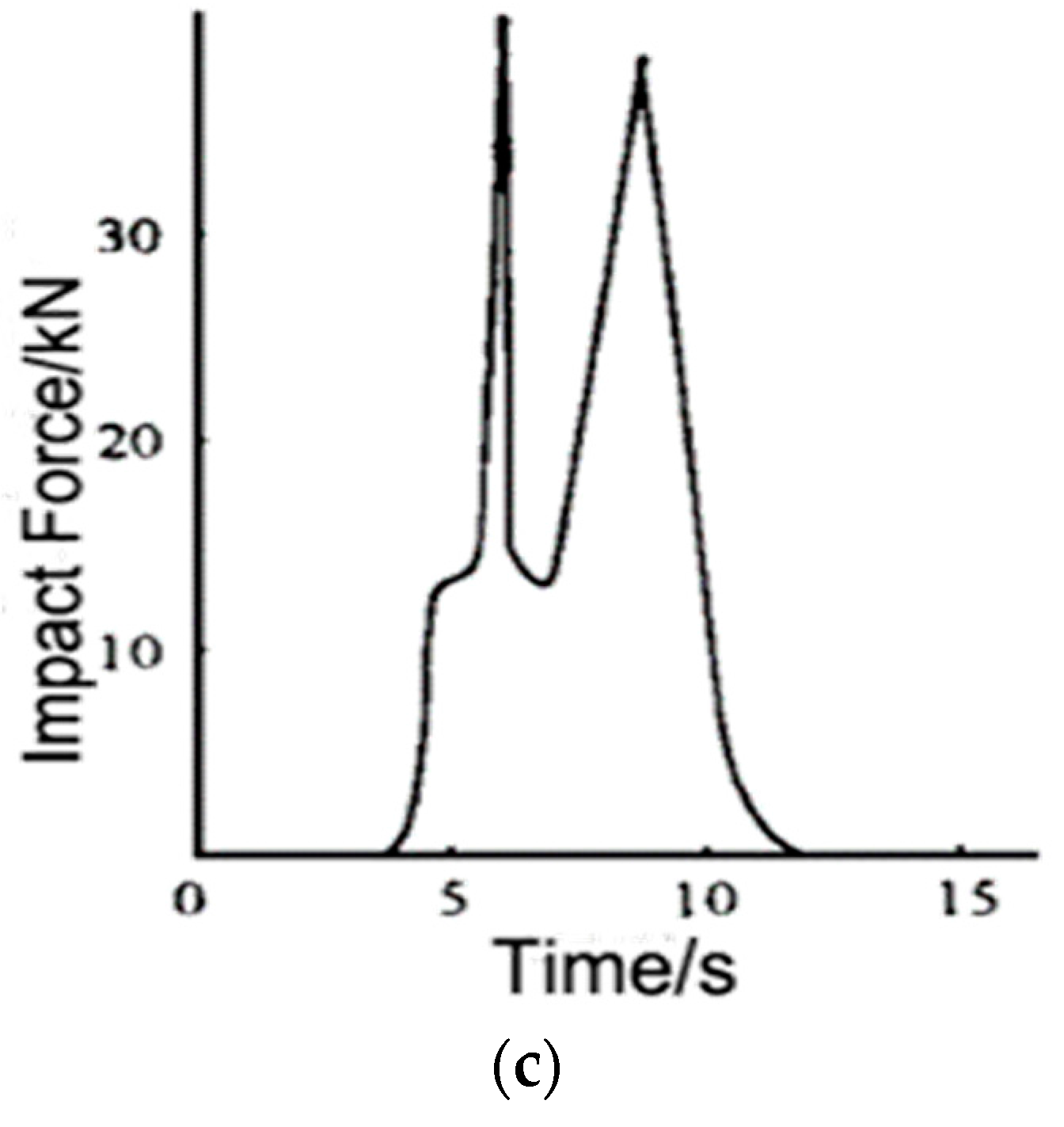

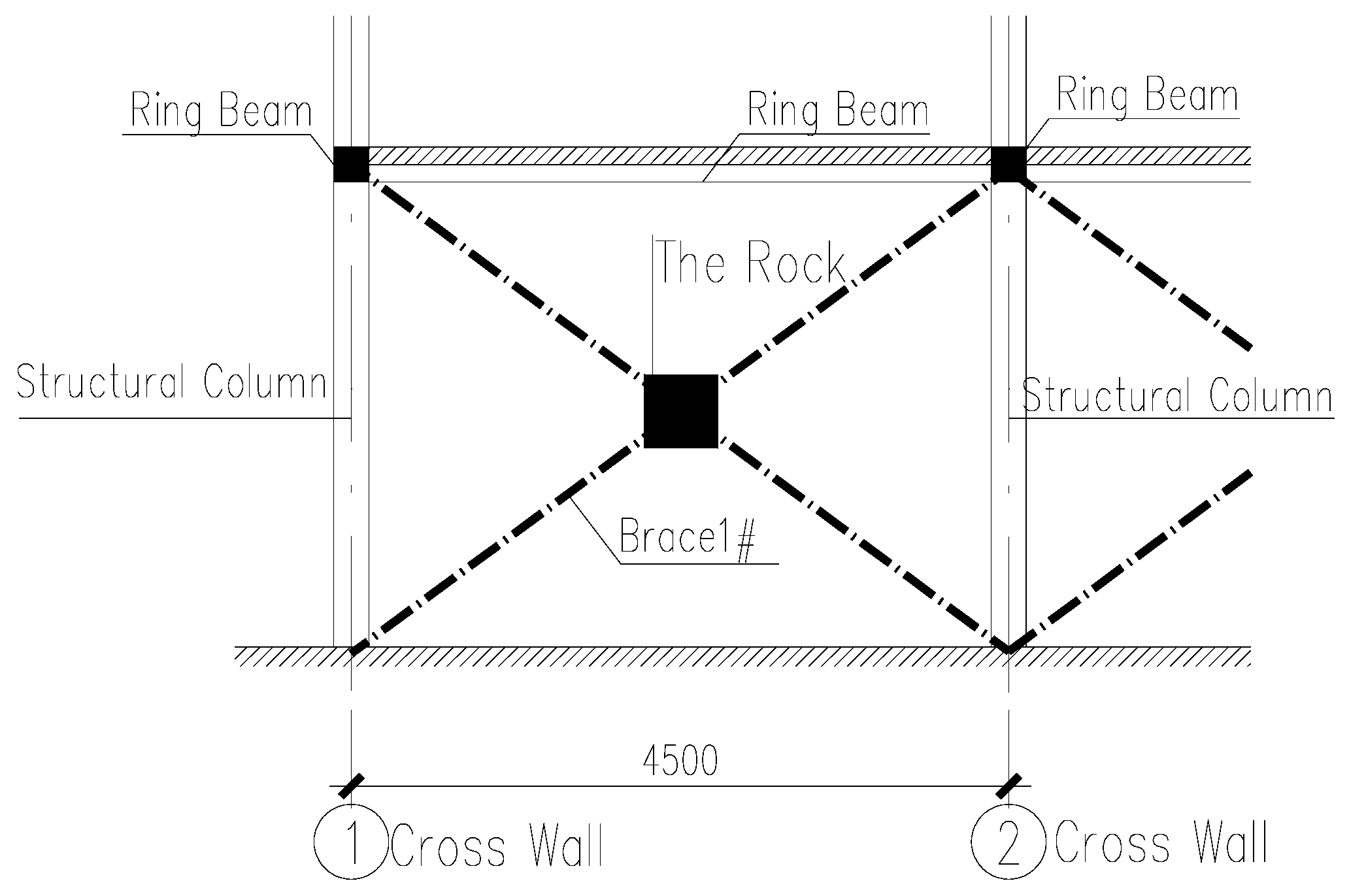
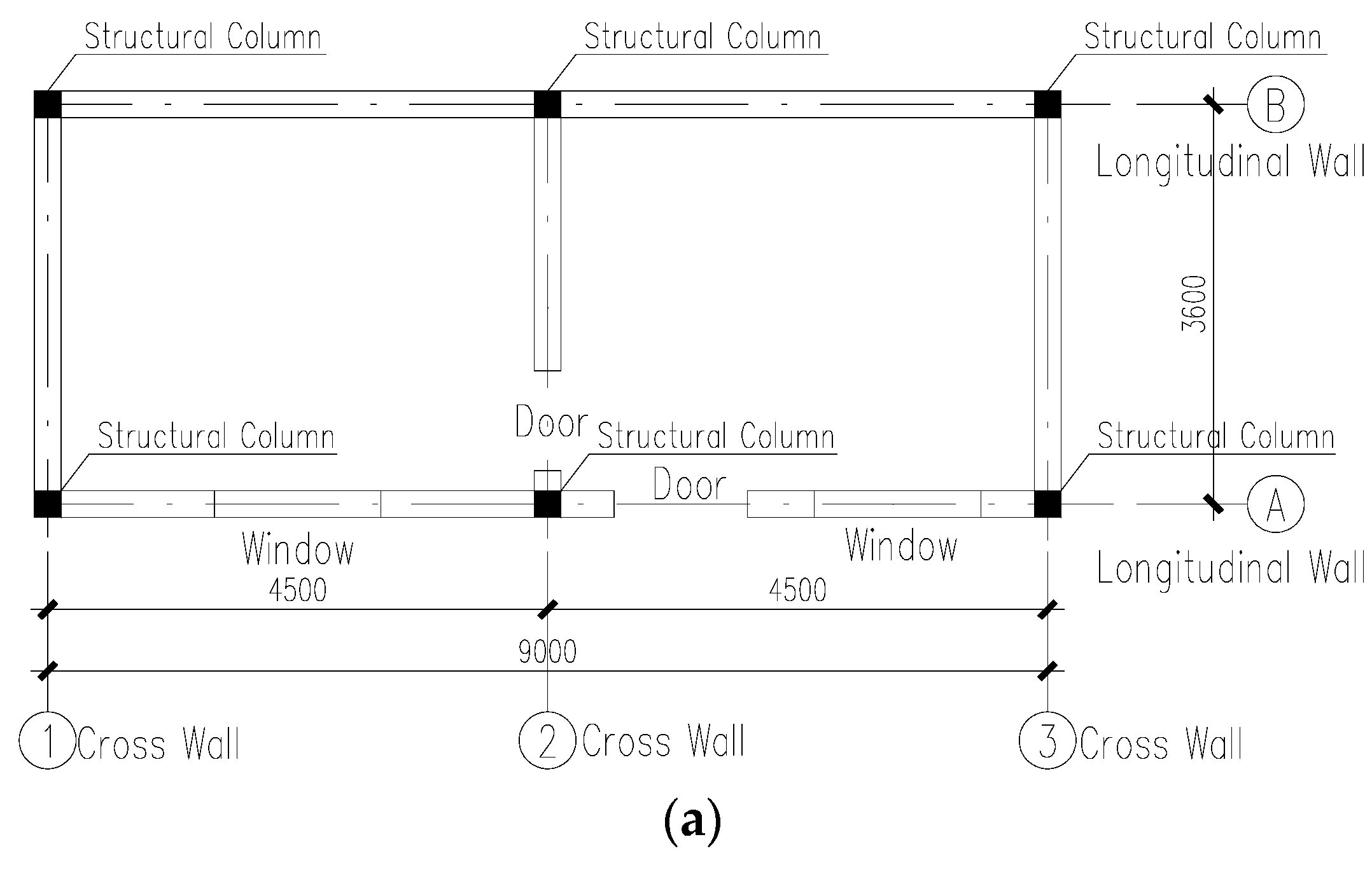
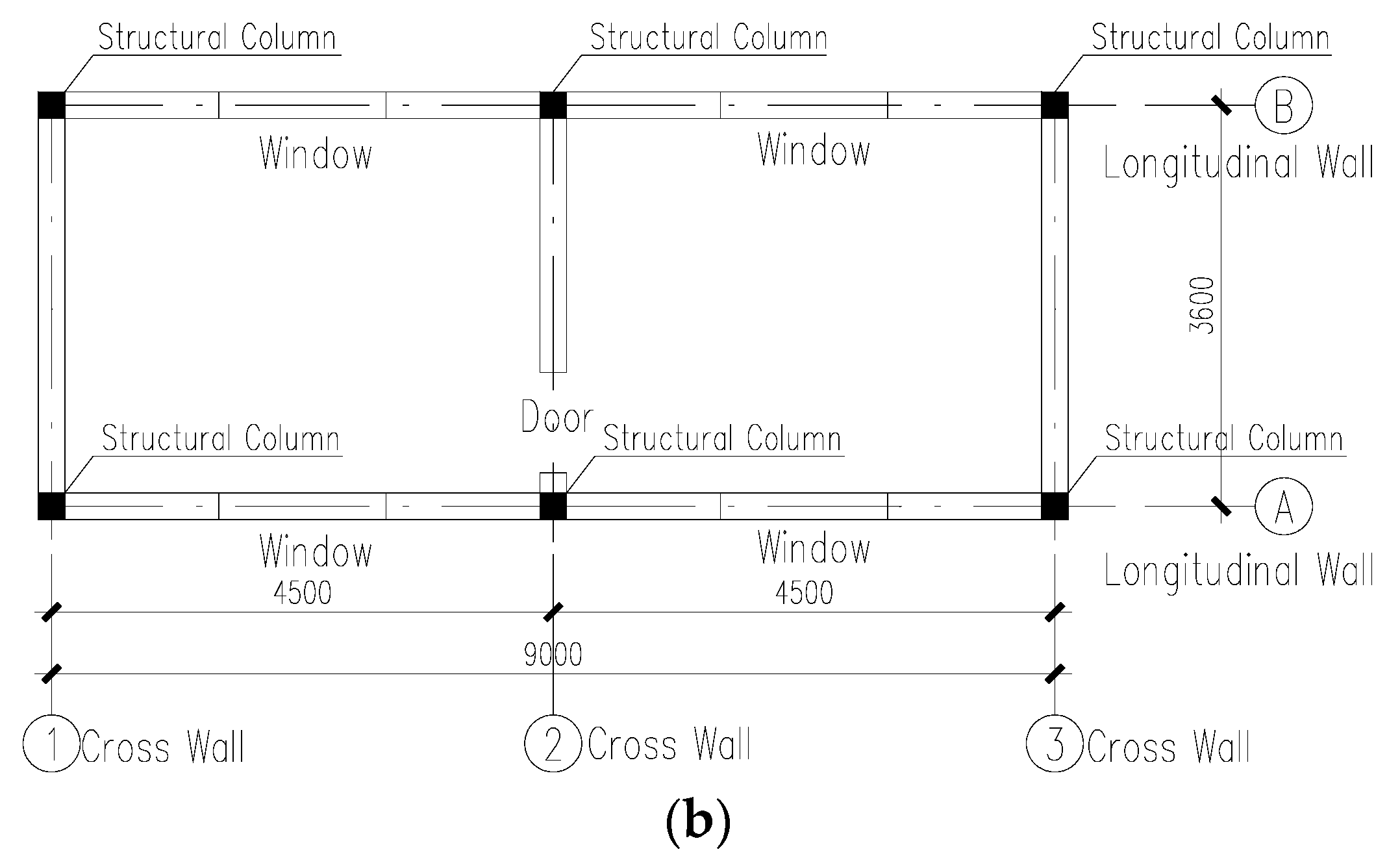
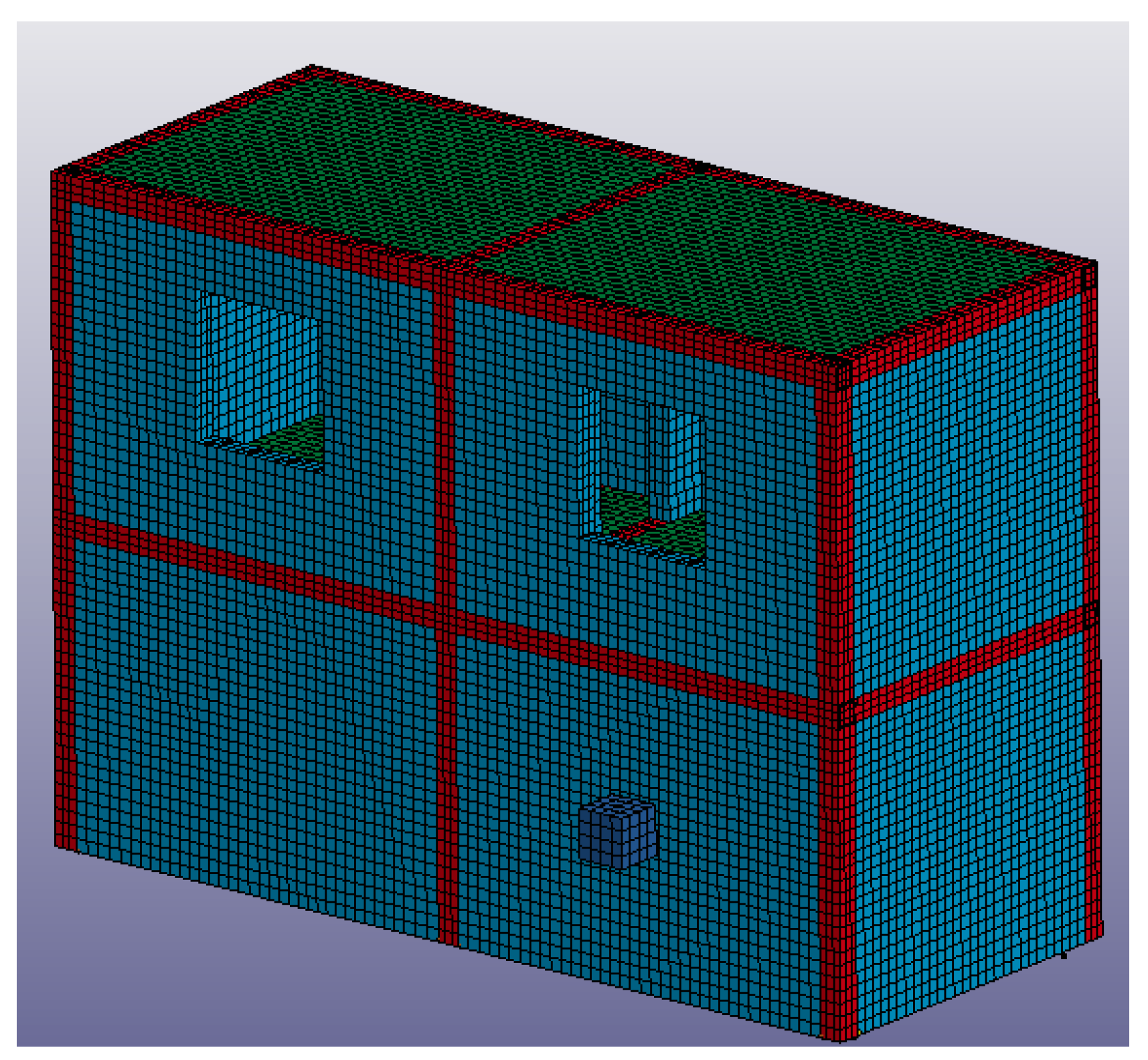

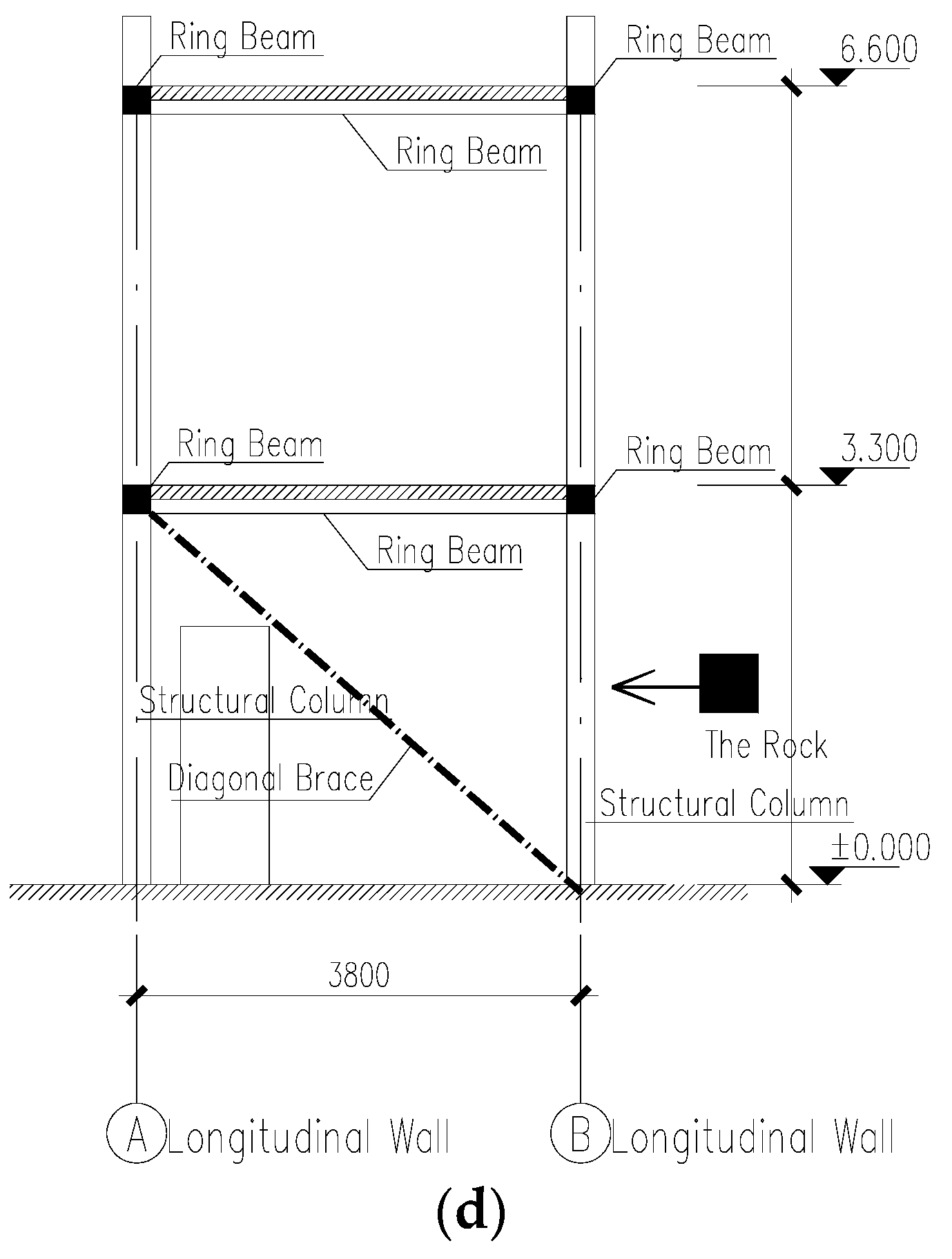


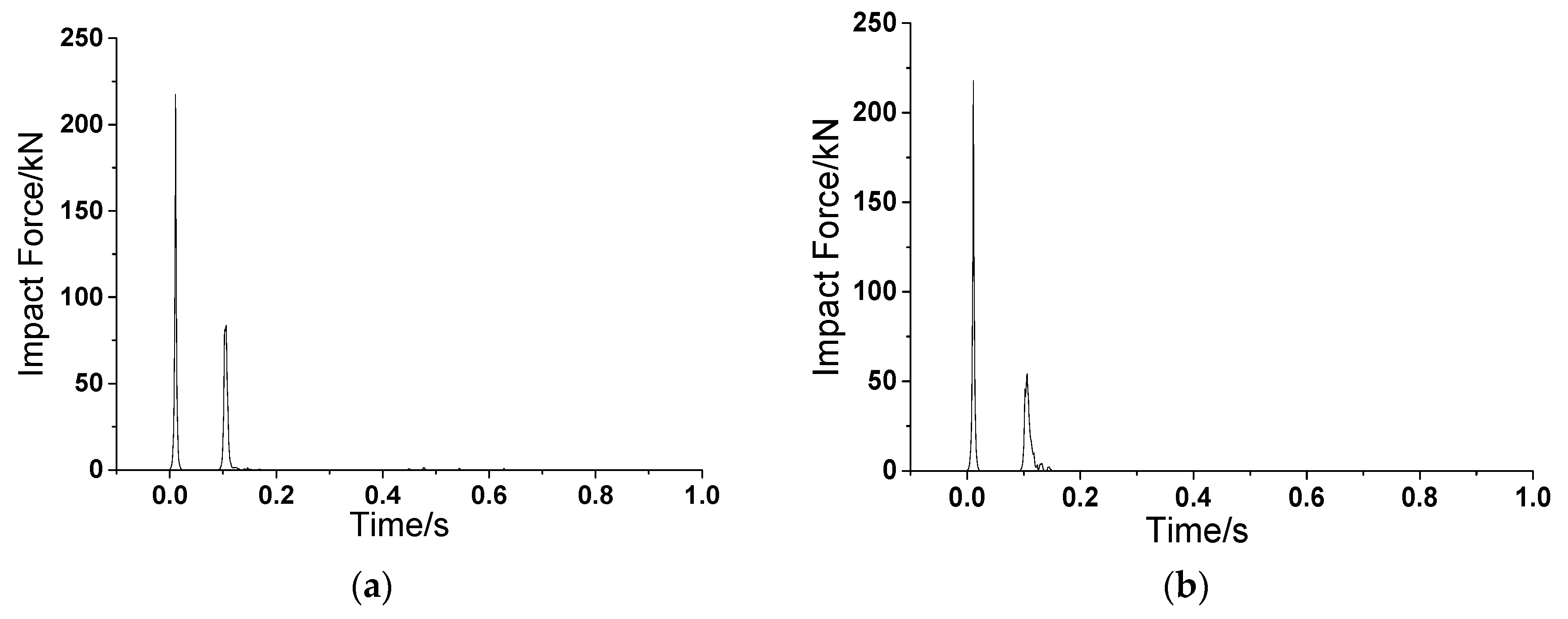

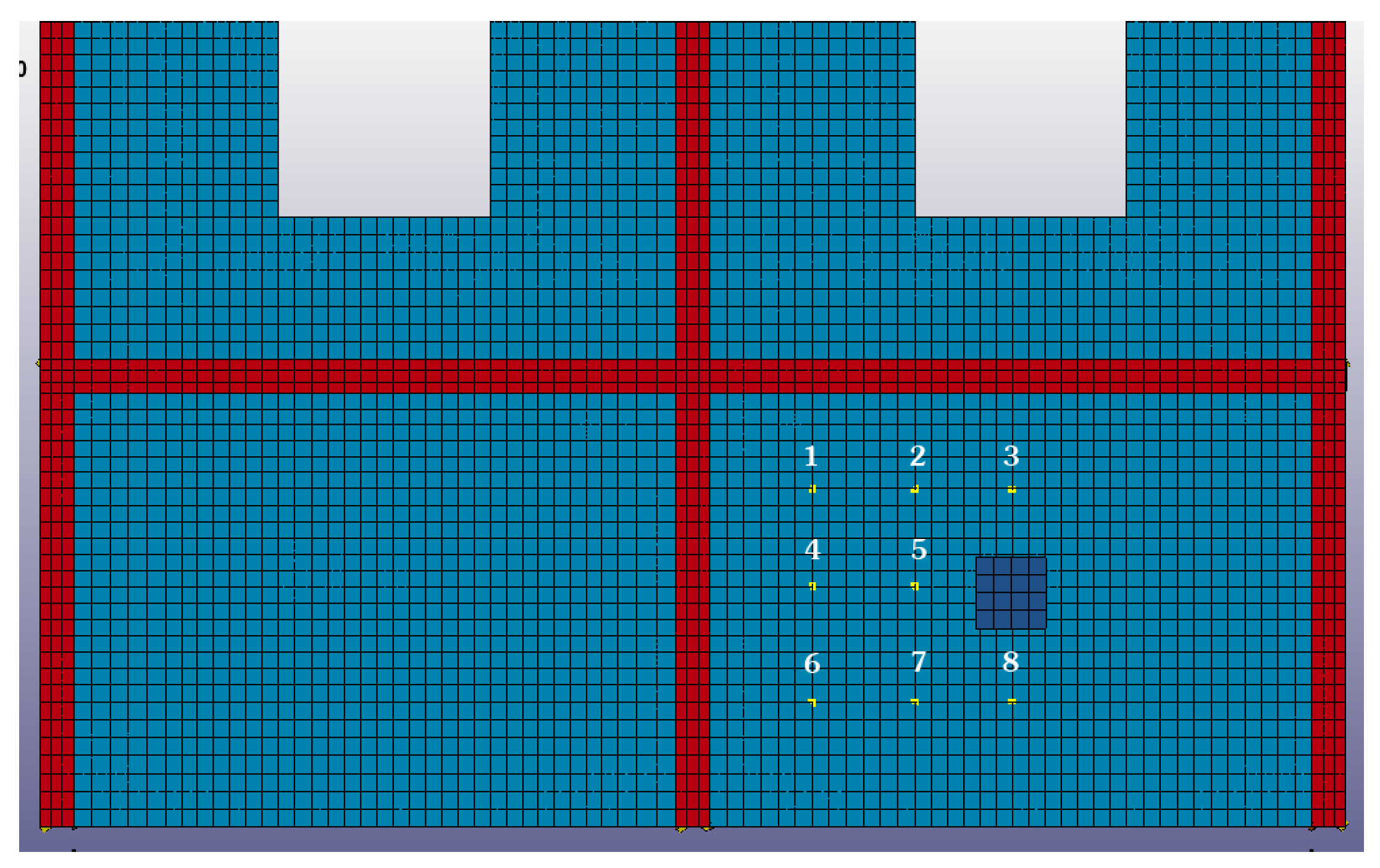
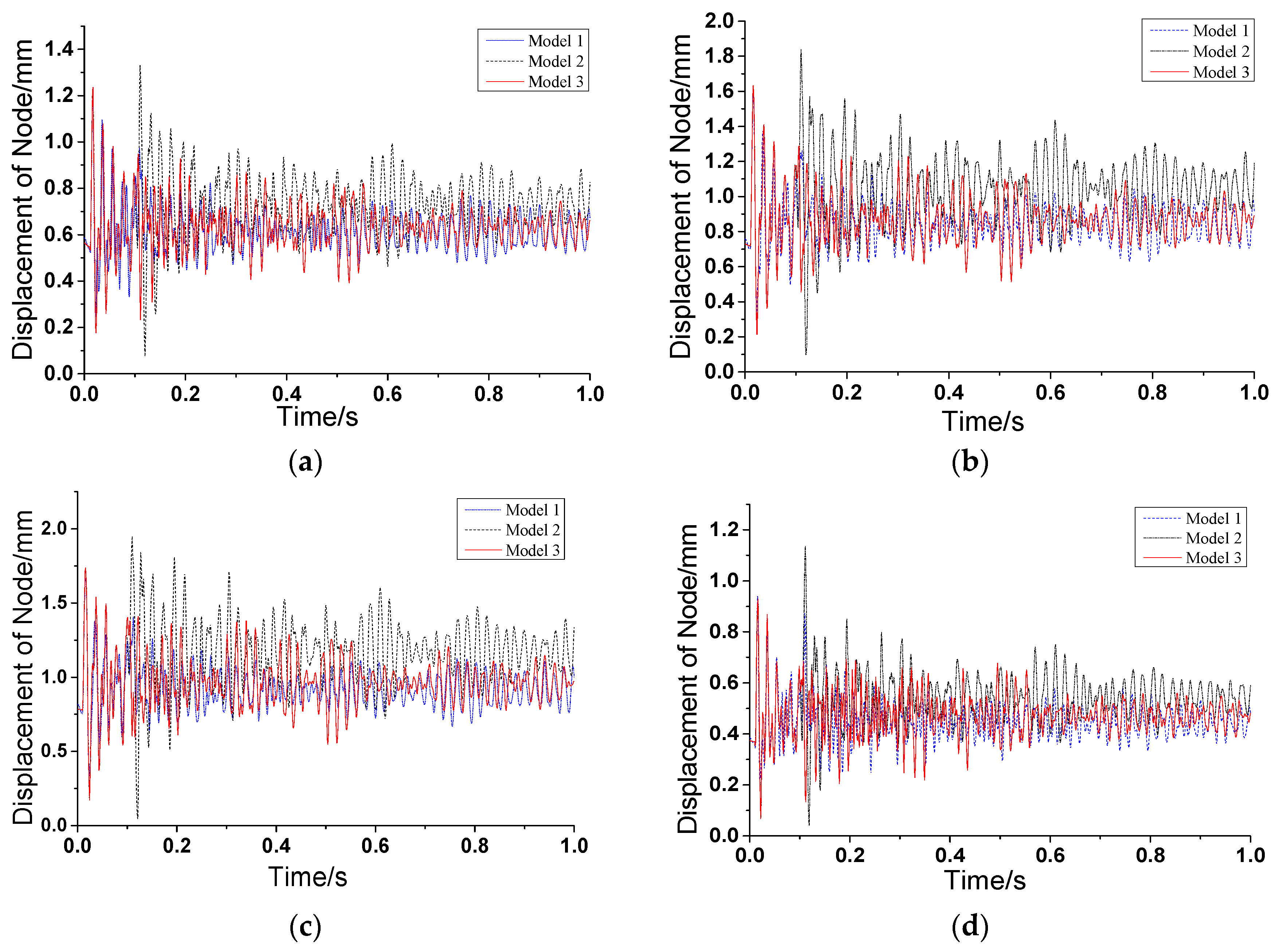
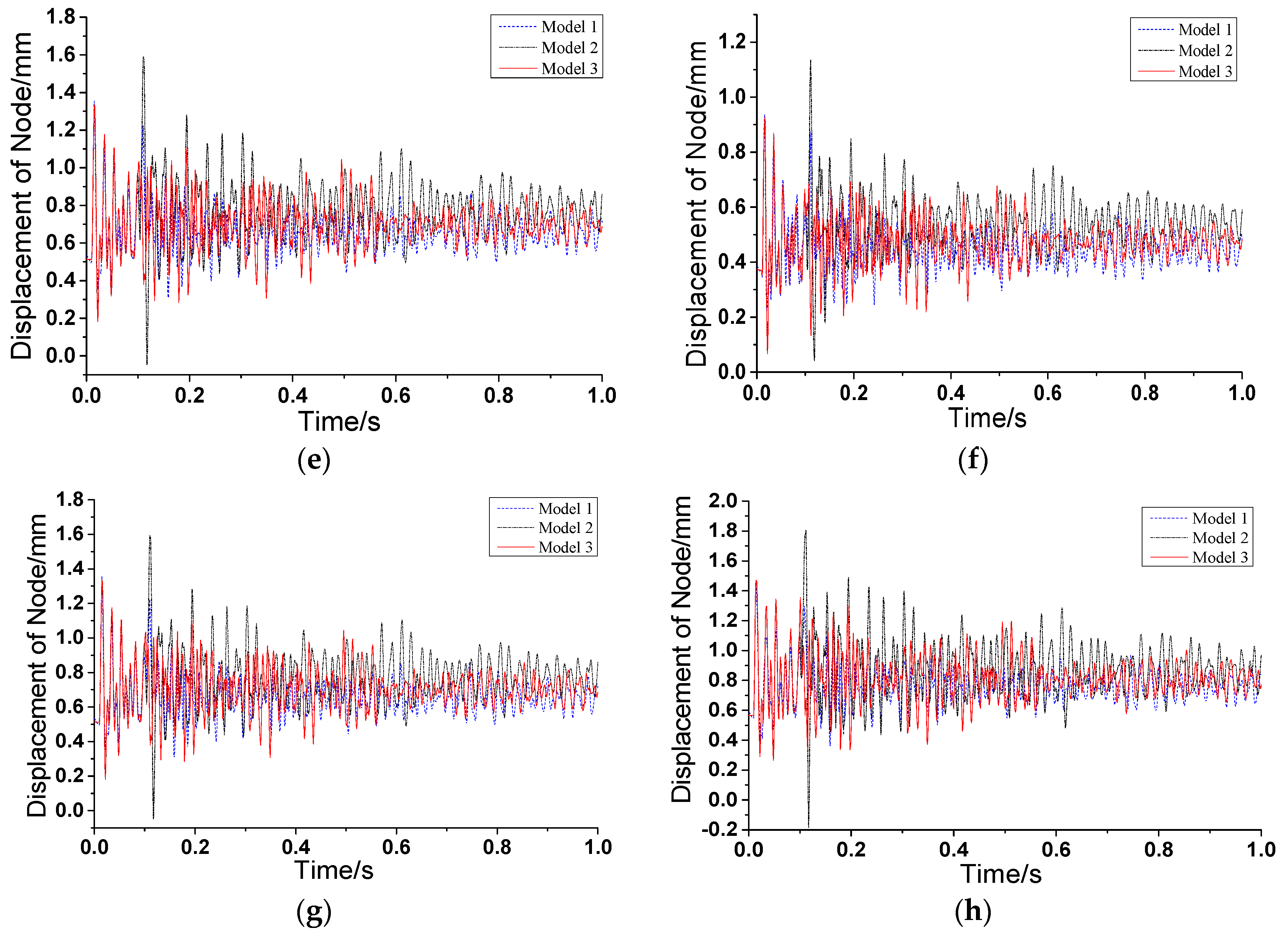
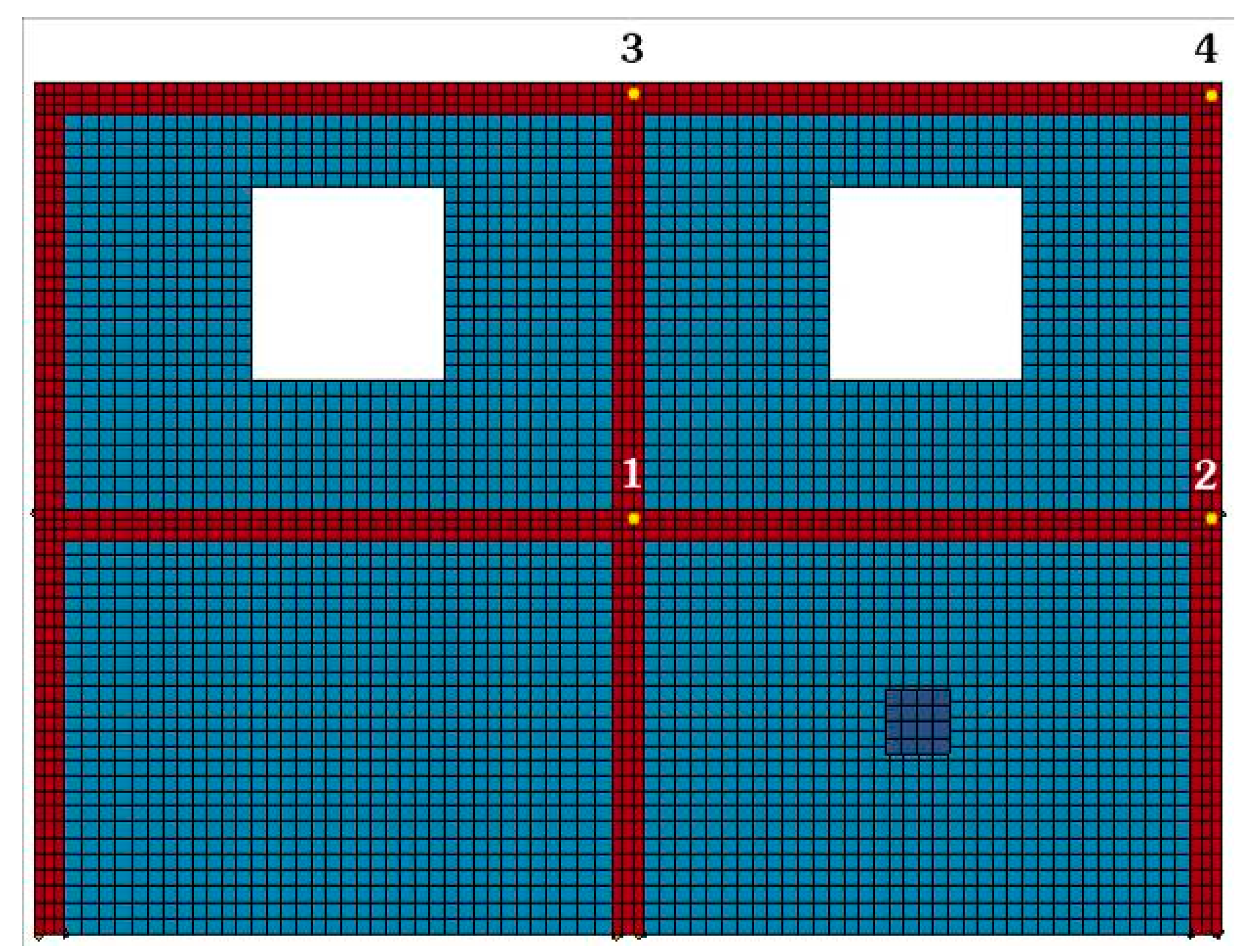
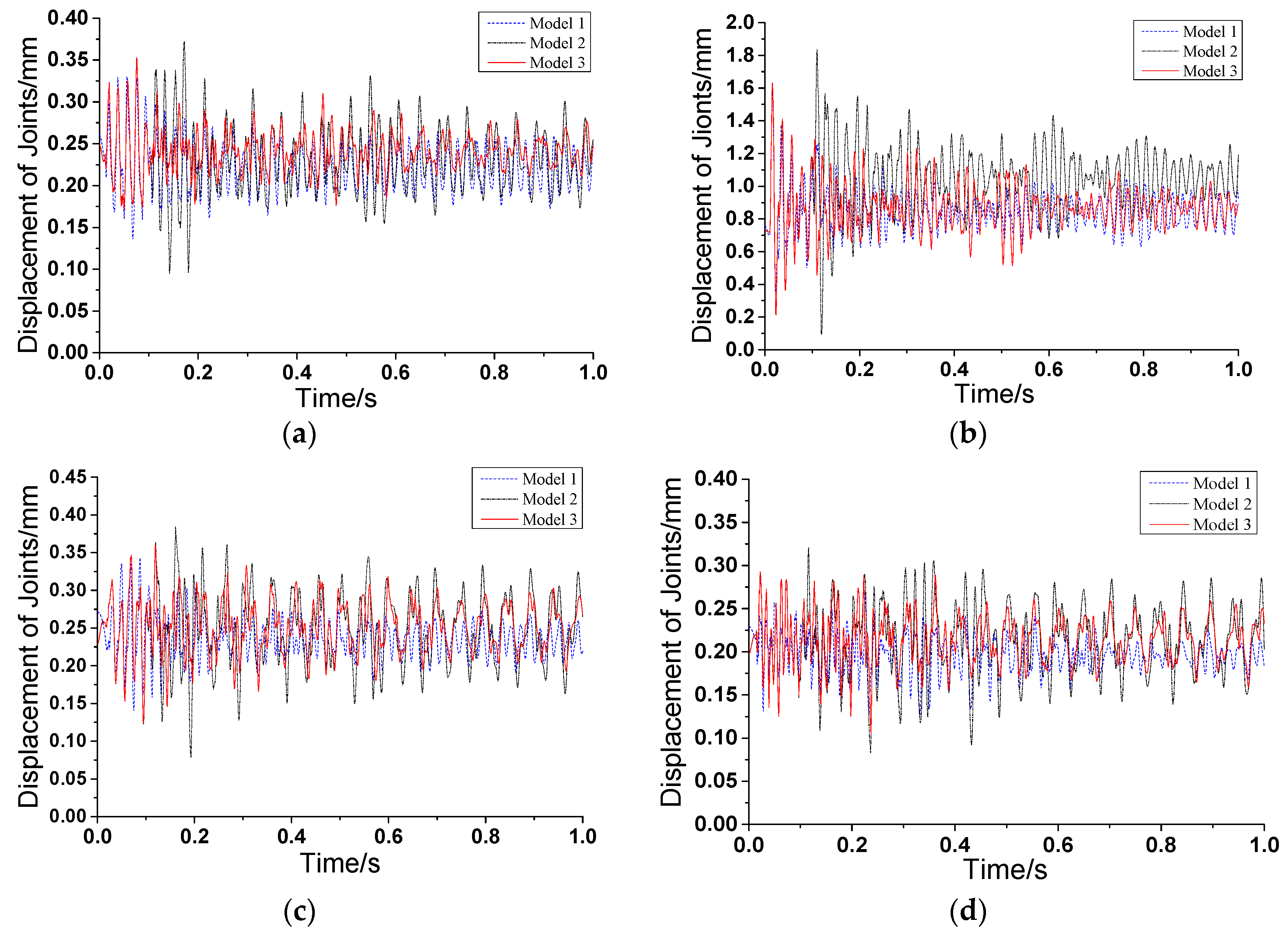

| Area | Formula | Range of Uses |
|---|---|---|
| Dongchuan Viscous Debris Flow | Suitable for viscous debris flow, especially for those in the area of Dongchuan | |
| Wudu Viscous Debris Flow Formula | Suitable for viscous debris flow in Wudu | |
| Beijing Watery Debris Flow | Suitable for watery debris flow in Beijing | |
| Zhamalong Watery Debris Flow | Suitable for watery debris flow with longitudinal slopes between 0.07 and 0.13 in Zhamalong |
| Type of Debris Flow | Density (t/m3) | Hydrodynamic Head Empirical Coefficient | Stationary Stage Empirical Coefficient |
|---|---|---|---|
| Viscous debris flow | 2.0 | 3 | 0.5 |
| Density | Poisson Ratio | Straw Brick Compressive Strength | Mortar Strength | Masonry Compressive Strength | Elastic Modulus |
|---|---|---|---|---|---|
| 1500 kg/m3 | 0.15 | 15.0 MPa | 10 MPa | 2.31 MPa | 3.70 GPa |
| Model | Peak Force at Walls/kN | Peak Force at Braces/kN |
|---|---|---|
| 1 | 218.0 | 83.6 |
| 2 | 216.3 | 54.2 |
| 3 | 216.5 | — |
| Items | Straw Bricks | Clay Bricks |
|---|---|---|
| Cost (USD) | 5184 | 9720 |
| Energy consumption in production (106 kJ) | 2.5 | 215.6 |
| Energy consumption in transportation (103 kJ) | 6.1 | 11.4 |
© 2017 by the authors. Licensee MDPI, Basel, Switzerland. This article is an open access article distributed under the terms and conditions of the Creative Commons Attribution (CC BY) license (http://creativecommons.org/licenses/by/4.0/).
Share and Cite
Li, P.; Li, T.; Lu, Z.; Li, J. Study on Dynamic Response of Novel Masonry Structures Impacted by Debris Flow. Sustainability 2017, 9, 1122. https://doi.org/10.3390/su9071122
Li P, Li T, Lu Z, Li J. Study on Dynamic Response of Novel Masonry Structures Impacted by Debris Flow. Sustainability. 2017; 9(7):1122. https://doi.org/10.3390/su9071122
Chicago/Turabian StyleLi, Peizhen, Tangzhenhao Li, Zheng Lu, and Jin Li. 2017. "Study on Dynamic Response of Novel Masonry Structures Impacted by Debris Flow" Sustainability 9, no. 7: 1122. https://doi.org/10.3390/su9071122





